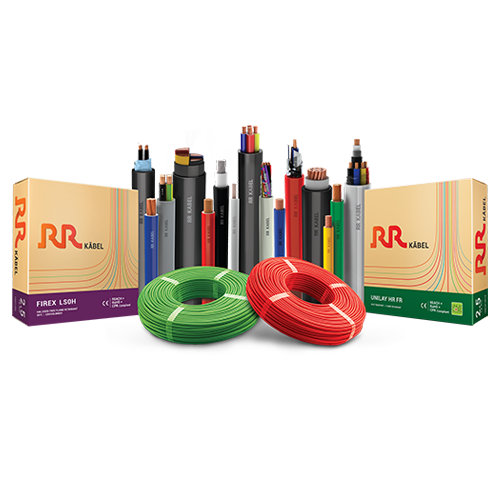In the landscape of modern industry, efficient power distribution is the cornerstone of uninterrupted operations and safety. Two sectors where this is especially critical are manufacturing and power generation plants. At the heart of power distribution infrastructure in these environments lies the feeder pillar panel—a vital component that ensures organized, reliable, and safe delivery of electricity.
This article explores the diverse applications of feeder pillar panels in these sectors, highlighting their importance in improving operational efficiency and safeguarding electrical systems.
What is a Feeder Pillar Panel?
A feeder pillar panel is an outdoor or indoor electrical enclosure housing circuit breakers, switches, meters, and fuses that control and distribute power to multiple outgoing feeders or circuits. These panels act as an intermediary point between the power source (such as transformers or power plants) and the end-use equipment or machines.
Feeder pillars are designed to be robust and weather-resistant when placed outdoors and modular enough to be customized to specific application needs.
Why Feeder Pillar Panels Are Crucial in Manufacturing and Power Generation
Both manufacturing units and power generation plants demand reliable, scalable, and safe power distribution systems. Feeder pillar panels meet these needs by:
- Centralizing control and protection of power feeders
- Simplifying maintenance and fault isolation
- Protecting electrical systems against overloads and faults
- Enabling easy expansion and reconfiguration of electrical circuits
Applications in Modern Manufacturing Plants
Manufacturing plants, whether automotive, food processing, or electronics, rely heavily on continuous and stable power supply. Here’s how feeder pillar panels fit in:
1. Power Distribution to Machinery and Equipment
Feeder pillar panels distribute power from transformers to various machines like conveyors, pumps, compressors, and robotic arms. Their modular design allows different machines or production lines to be powered independently, reducing downtime during maintenance or faults.
2. Safety and Fault Isolation
Manufacturing floors are often hazardous environments. Feeder pillar panels include protective devices like MCBs and fuses, which safeguard against short circuits or overloads. When faults occur, the feeder pillar isolates the affected circuit without shutting down the entire plant.
3. Facilitating Automation and Smart Controls
Modern manufacturing plants incorporate automation systems, requiring precise and reliable power management. Feeder pillars can be integrated with smart meters and remote monitoring systems to track energy consumption and detect anomalies in real-time.
4. Outdoor and Harsh Environment Use
Some manufacturing processes happen outdoors or in challenging environments such as chemical plants or steel mills. Weatherproof feeder pillars ensure reliable power distribution despite dust, moisture, or extreme temperatures.
Applications in Power Generation Plants
Power generation plants—whether thermal, hydro, or renewable energy-based—demand robust power distribution to handle high voltages and massive loads. Feeder pillar panels serve critical functions here:
1. Feeder Control for Turbines and Generators
Feeder pillars manage and distribute electrical power generated by turbines or generators to auxiliary systems and the grid. They provide switching and protection mechanisms to handle the high voltages safely.
2. Grid Interface and Load Management
Feeder pillars act as points of interface between the power plant and the national grid or industrial consumers. They enable operators to control load distribution, balance power flow, and perform scheduled switching for maintenance.
3. Integration with Protection Relays and Automation
Modern power plants use sophisticated protection relays and SCADA (Supervisory Control and Data Acquisition) systems. Feeder pillars can house communication devices and control relays that support automatic fault detection and grid synchronization.
4. Ensuring Operational Safety
With high voltages and currents, safety is paramount in power plants. Feeder pillars provide isolation and grounding mechanisms to protect equipment and personnel during faults or emergency shutdowns.
Benefits of Using Feeder Pillar Panels
- Improved Reliability: Organized power distribution reduces the risk of outages.
- Enhanced Safety: Protection devices within feeder pillars prevent electrical hazards.
- Easy Maintenance: Segmented circuits simplify fault identification and repair.
- Scalability: Modular design supports future expansion of power systems.
- Cost-Effective: Prevents costly downtime and equipment damage by timely isolations.
Conclusion
In the fast-paced environments of modern manufacturing and power generation, the importance of robust and reliable power distribution cannot be overstated. Feeder pillar panels are integral to this infrastructure, offering centralized control, safety, and flexibility.
By adopting advanced feeder pillar systems, industries can ensure uninterrupted power flow, optimize maintenance, and meet stringent safety standards—ultimately driving operational excellence and sustainability.
Lapp Cables: Ensuring High-Performance Power Distribution in Building Projects
Why Electrical Experts Trust Schneider for Smart and Sustainable Infrastructure



